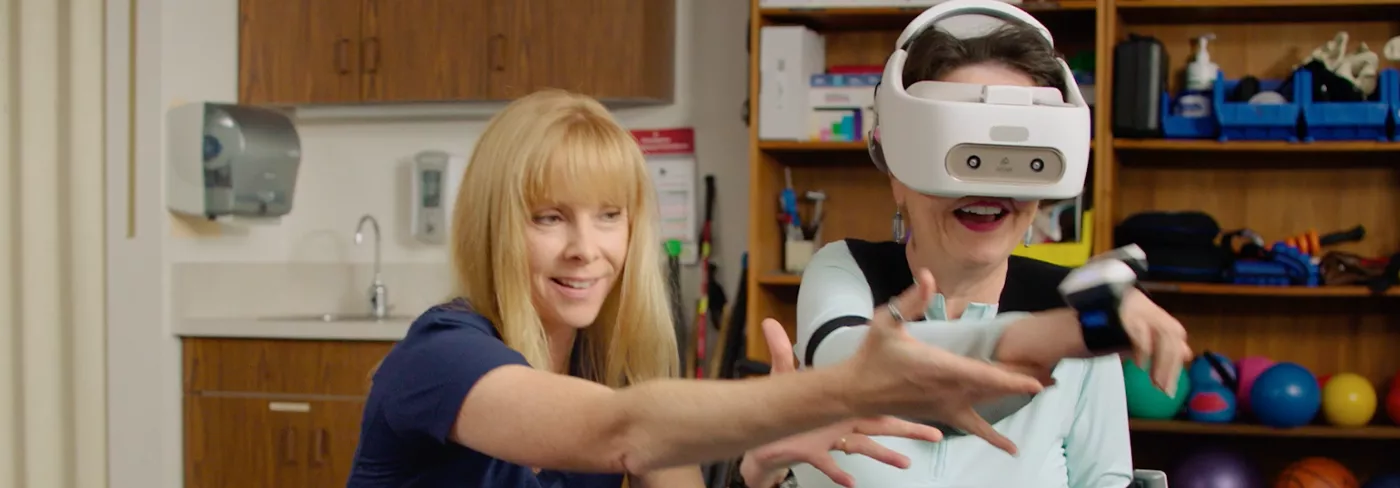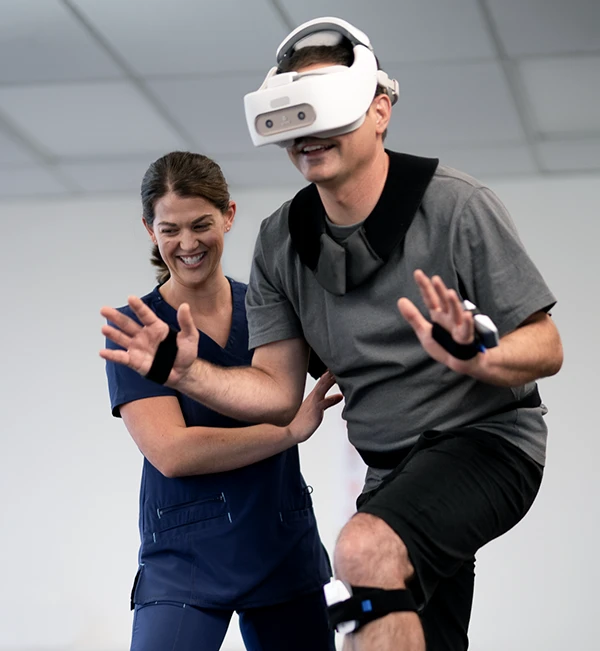Therapeutic Areas / Distraction
Distraction

Pain is an uncomfortable feeling signaling that something is wrong and it is classified as acute or chronic. The best way to treat pain is to manage the symptoms. If the source of pain can’t be treated, or isn’t known, clinicians can offer options for pain management.
Virtual Reality (VR) applications have emerged as a non-pharmacological alternative or a distraction therapy for both acute and chronic pain.1
Research shows that VR is an effective pain distraction tool for the short-term relief of both acute and chronic pain — often associated with such conditions as fibromyalgia, phantom limb pain, and regional specific pain from past injuries or illnesses.2 The research also shows that VR is effective as a distraction therapy when it encompasses the following characteristics2:
- Presence or sense of immersion in the environment that allows for a realistic experience
- Interactivity defined as the degree of engagement the participant has in a virtual scenario which encourages physical involvement and pain tolerance
- Customization that offers participants autonomy to choose a scenario most suited to their needs/preferences
- Social interaction in the VR environment which can augment distraction from pain
- Embodiment of the virtual avatar which describes the degree to which physical movements translate to the virtual movement of the avatar.
Research on VR use for pain distraction therapy is enabling the creative use of VR to manage an array of pain types within chronic and acute pain. VR’s characteristics of immersion, embodiment and others are effective in distracting individuals from their state of pain and provide some much-needed relief.
REAL® Activities for Distraction
Learn how REAL therapeutic and wellness activities are designed to engage individuals in therapy.Distraction technique for pain, stress, improving cervical motion, tolerance of a busier environment, improve gaze stabilization, cognitive focus and function
All REAL activities
Engage a wide rehab patient population including high-acuity and high-functioning patients
Whether you are working with high-acuity patients who lack upper extremity (UE) stability or high-functioning patients who require new challenges like bimanual coordination and increased speed, REAL System has you covered. Schedule a free Demo to learn more about REAL System from our dedicated team of Care Specialists.
- Mallari B, Spaeth EK, Goh H, Boyd BS. Virtual reality as an analgesic for acute and chronic pain in adults: a systematic review and meta-analysis. J Pain Res. 2019;12:2053-2085. doi:10.2147/JPR.S200498
- Pourmand A, Davis S, Marchak A, Whiteside T, Sikka N. Virtual Reality as a Clinical Tool for Pain Management. Curr Pain Headache Rep. 2018;22(8):53. doi:10.1007/s11916-018-0708-2
Procedural and operative techniques and considerations are illustrative examples from healthcare provider experience. Healthcare providers' treatment and technique decisions will vary based on their medical judgment. Individual results may vary depending on patient-specific attributes and other factors.
Caution: Federal (USA) law restricts this device to sale by or on the order of a healthcare provider. Prior to use, please refer to the Instructions for Use (IFU) for complete product indications, contraindications, warnings, precautions, potential adverse events, and detailed instructions for use. Please click here for the complete IFU. Please contact your REAL Care Specialist for more information. 20722, Rev. A 03/21 USA

Learn more about
Immersive Healthcare